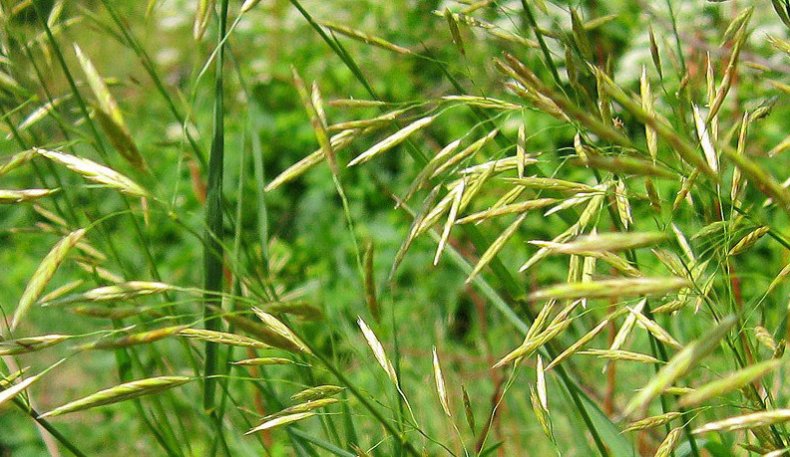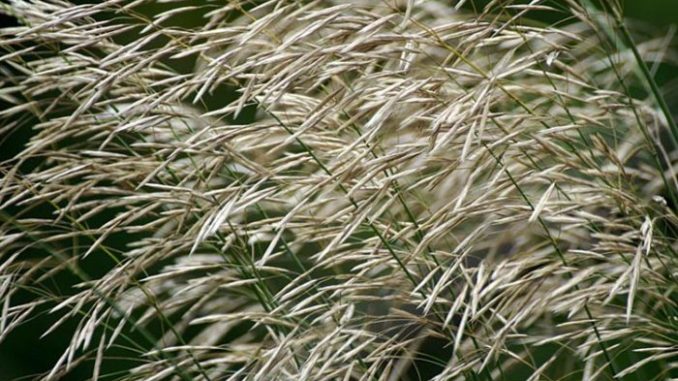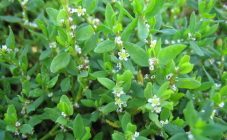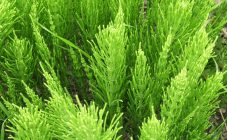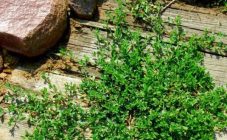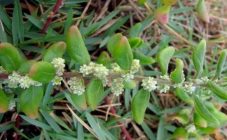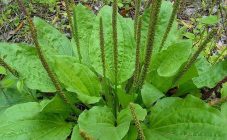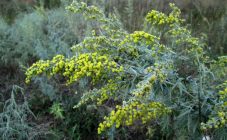Content:
On agricultural plots, weed of an unusual type is often found, which is sometimes mistaken for a weed. In fact, it turns out that this is fodder oats, from which hay is prepared for animals.
Description of the herb
Livestock experts are well aware that awnless fire grass is a perennial plant widely used as a forage crop. In appearance, it looks like a typical high oats. She has another purpose: growing grass contributes to the enrichment of the soil with nitrogen, which is a useful top dressing for other plants growing on the site.
This herbaceous crop has the ability to release nitrogen by processing carbon dioxide taken directly from the air. The roots feeding this plant are almost 2 meters long. The development of the root system distinguishes this variety from other types of herbs that do not have the following advantages:
- Koster grasses that are described in this section are capable of withstanding severe droughts.
- At the same time, they provide a good harvest of hay even in regions with minimal average annual rainfall.
- Rump grass also easily copes with prolonged stagnation of moisture.
Due to these properties, this herbal species can be classified as particularly hardy crops.
Varieties
Fodder rump grass has many varieties (about 150 species), among which the following are most common:
- Benequin's bonfire (scientifically called B. Inermis cereal). It is a perennial plant with a well-developed branched root system, reaching 2 meters. This species can grow up to 1.2 meters in height.
- The cleansing fire, or B. catharticus, is a perennial like everyone else. In this species, you can find samples, the life of which is limited to two years. In height, this grass is rarely more than one meter, but in the soil it forms a gorgeous sod layer.
- The botanical decorated bonfire, called by breeders B. Ornans, is the same perennial plant, but reaches a height of 1.5 meters. Its root system, in comparison with the species already considered, is rather poor. The leaves of this herb are wide and beautiful. There is a hairline on their surface, the color of which is deep green.
Vegetative propagation is realized in a natural way due to the growth of the root system and the formation of young roots, from which new shoots appear (in this case, nothing is required to plant). But this approach is not without a drawback, since the ability to reproduce appears in the grass only in the 4th year of the growing season. In the case when it is not possible to wait for so many years, you will have to sow seeds and be content with a poor harvest.
Awnless bonfire prefers loamy and sandy loam soils and does not tolerate the presence of a peat component in them (as well as high acidity).
In order to sow this grass, coastal areas in river valleys are usually used, as well as drained marshlands. Strongly saline soils are considered completely unacceptable for breeding rump.
Culture properties
The descriptive characteristic can be presented as follows:
- Bonfire perennial grass reaches a height of 1.5 meters.
- On the stems of this variety of perennial grasses, there are many long shoots mixed with the deciduous part.
- The leaves on the stem are flat, 4 to 10 mm wide (they are usually dark green in color).
- Inflorescences that bloom during ripening are panicle type (their total length reaches 17-20 cm).
- They are collected from large spikelets, about 15-30 mm long.
Among the characteristic properties of perennial grass, its frost resistance and moisture resistance should be ranked, which is also explained by the characteristics of the root system. When spring comes with thaws, as well as after flooding of the soil, young shoots grow on the rhizome, after which the plant is completely restored.
The beneficial properties of this herb are manifested in its ability to grow continuously for several years in a row. Moreover, every year it is possible to mow it for hay twice a season, which is widely used in animal husbandry, where it is used as a forage crop. Nothing is known about any influence of rump on humans.
About diseases and pests
Diseases and pests affecting this plant are the same as in most cereals. These include various types of root (stem) rot as well as spot, mosaic and rust. Another group of diseases should include certain types of bacteriosis and smut.
All of them cause great damage to the cultivation of agricultural crops and force producers to fight them in the most decisive way.
To prevent possible diseases, agricultural specialists have developed a whole system of preventive measures carried out throughout the growing season (autumn in this sense is also no exception).
Time for picking and harvesting
Grass harvesting is carried out in the following three ways:
- By grazing animals on overgrown crops.
- For green fodder.
- Harvesting hay.
In the first case, for grazing, the tillering phase of cereal ears is selected and up to the formation of inflorescences. This species of perennial is harvested for green nutritious food with the beginning of the formation of tubules and until the beginning of flowering.
In the latter version, it is recommended to start collecting grass with the onset of the period of sweeping panicles, and end after complete mowing of the sown areas.
In conclusion, it should be noted that the vegetation of perennial cereal plants is of interest from the point of view of their cultivation for very specific purposes. Depending on this, one or another approach to growing this crop is being implemented.
